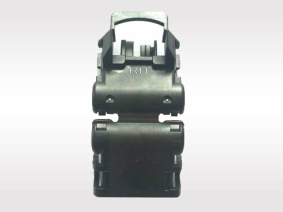Stamping die material
brief introduction
The materials of stamping die are steel, cemented carbide, steel bonded cemented carbide, zinc based alloy, low melting point alloy, aluminum bronze, polymer materials and so on. Most of the materials used to manufacture stamping dies are steel. The commonly used materials for working parts of dies are: carbon tool steel, low alloy tool steel, high carbon and high chromium or medium chromium tool steel, medium carbon alloy steel, high speed steel, base steel, cemented carbide, steel bonded carbide, etc.
Basic classification
a. Carbon tool steel
T8A, T10A and other carbon tool steels are widely used in die and mold. The advantages are good processing performance and low price. However, the hardenability and red hardness are poor, the heat treatment deformation is large and the bearing capacity is low.
b. Low alloy tool steel
Low alloy tool steel is based on carbon tool steel with appropriate alloy elements. Compared with the carbon tool steel, the quenching deformation and cracking tendency are reduced, the hardenability and wear resistance of the steel are improved. The low alloy steels used in mould manufacturing are CrWMn, 9mn2v, 7CrSiMnMoV (code CH-1), 6crnisimnmov (code GD), etc.
c. High carbon and high chromium tool steel
Common high carbon and high chromium tool steels are Cr12 and Cr12MoV, Cr12Mo1V1 (code D2) and SKD11. They have good hardenability, hardenability and wear resistance, and their heat treatment deformation is very small. They are high wear resistance and micro deformation die steel, and their bearing capacity is second only to high speed steel. However, carbide segregation is serious, so repeated upsetting and drawing (axial upsetting and radial drawing) must be carried out to reduce the inhomogeneity of carbides and improve the service performance.
d. High carbon medium chromium tool steel
Cr4W2MoV, cr6wv, Cr5MoV and other high carbon medium chromium tool steels used for die and mould are characterized by low chromium content, less eutectic carbides, uniform distribution of carbides, small heat treatment deformation, good hardenability and dimensional stability. Compared with the high carbon and high chromium steel with relatively serious carbide segregation, the properties are improved.
e. High speed steel
High speed steel has the highest hardness, wear resistance and compressive strength of die steel, and its bearing capacity is very high. W18Cr4V (Code: 8-4-1), W6Mo5Cr4V2 (Code: 6-5-4-2, American brand is m2) and 6w6mo5cr4v (Code: 6w6 or low-carbon m2) are commonly used in the dies. In order to improve the distribution of carbides in high speed steel, the forging should be changed.
f. Matrix steel
In order to improve the properties of high speed steel, a small amount of other elements are added to the basic composition of high speed steel and the carbon content is appropriately increased or decreased. Such steels are collectively referred to as the base steel. They not only have the characteristics of high-speed steel, but also have certain wear resistance and hardness, and their fatigue strength and toughness are better than high-speed steel. They are high-strength and Toughness Cold Work Die steel, but the material cost is lower than high-speed steel. The matrix steels commonly used in the die are 6cr4w3mo2vnb (code 65Nb), 7Cr7Mo2V2Si (code LD), 5cr4mo3simnval (code 012AL), etc.
g. Cemented carbide and steel bonded cemented carbide
The hardness and wear resistance of cemented carbide are higher than that of any other die steel, but the bending strength and toughness are poor. The cemented carbide used as die is tungsten cobalt. For the mold with low impact and high wear resistance, the cemented carbide with low cobalt content can be selected. The cemented carbide with high cobalt content can be selected for the die with high impact.
Steel bonded cemented carbide is made by sintering iron powder with a small amount of alloying elements (such as chromium, molybdenum, tungsten, vanadium, etc.) as binder and titanium carbide or tungsten carbide as hard phase. The matrix of steel bonded cemented carbide is steel, which overcomes the shortcomings of poor toughness and machining difficulty of cemented carbide, and can be used for cutting, welding, forging and heat treatment. Although the hardness and wear resistance of steel bonded cemented carbide are lower than that of cemented carbide, they are still higher than those of other steels. After quenching and tempering, the hardness can reach 68 ~ 73hrc.
h. New materials
The material used in stamping die belongs to cold working die steel, which is widely used and has the largest variety. The main performance requirements are strength, toughness and wear resistance. The development trend of cold working die steel is based on the properties of high alloy steel D2 (equivalent to Cr12MoV) in China, which can be divided into two branches: one is to reduce the carbon content and alloy element content, improve the uniformity of carbide distribution in steel, and highlight the improvement of die toughness. For example, 8crmo2v2si of American vanadium alloy steel company, DC53 (cr8mo2siv) of Datong special steel company of Japan, etc. The other is a kind of powder high speed steel developed for the purpose of improving wear resistance and adapting to high speed, automation and mass production. Such as 320crvmo13 in Germany.






